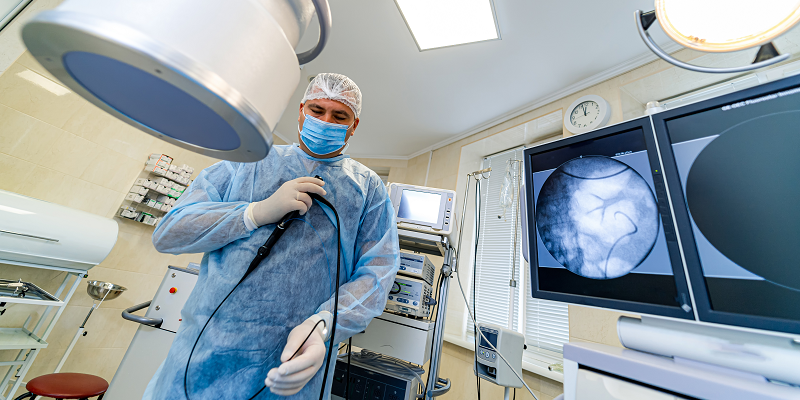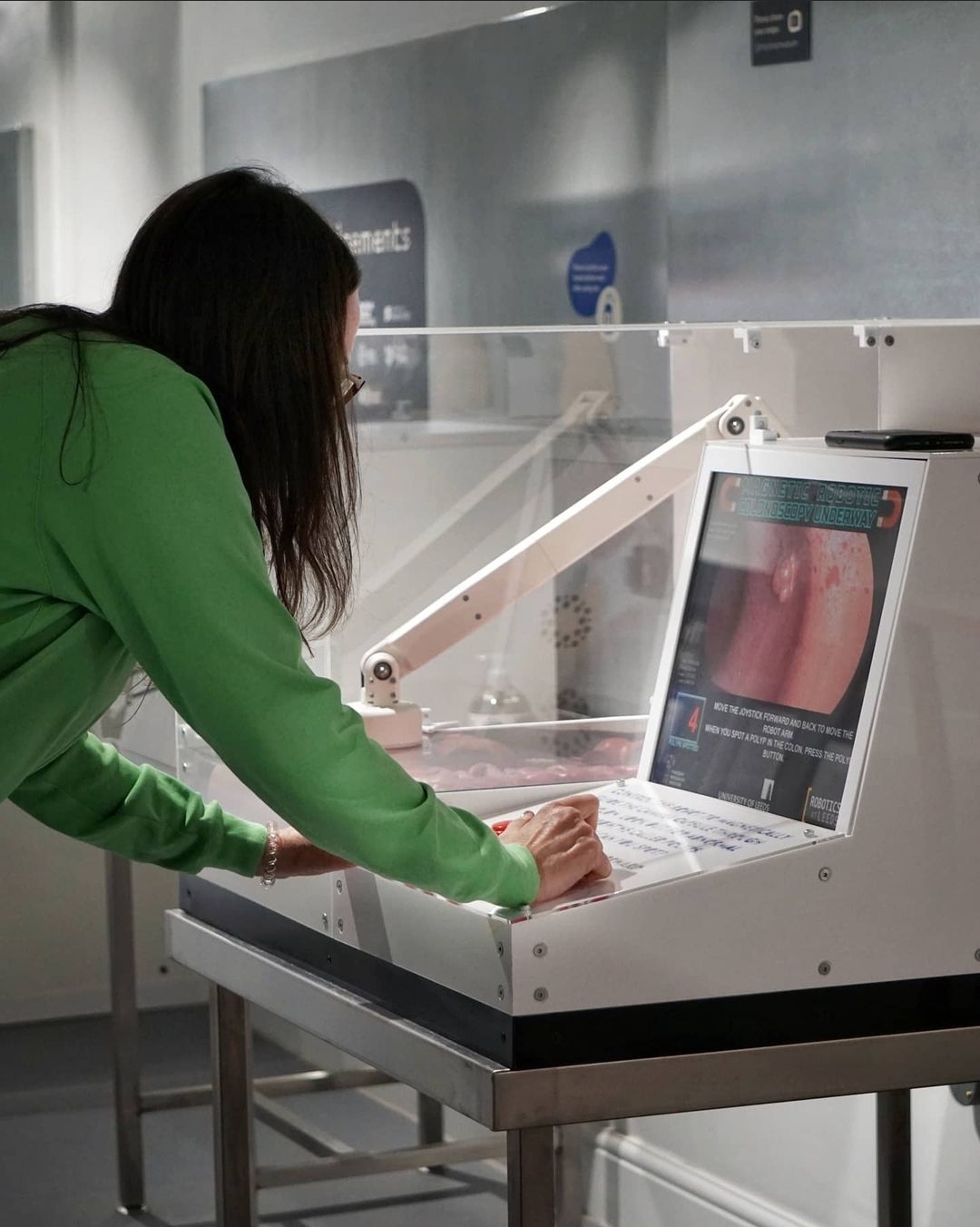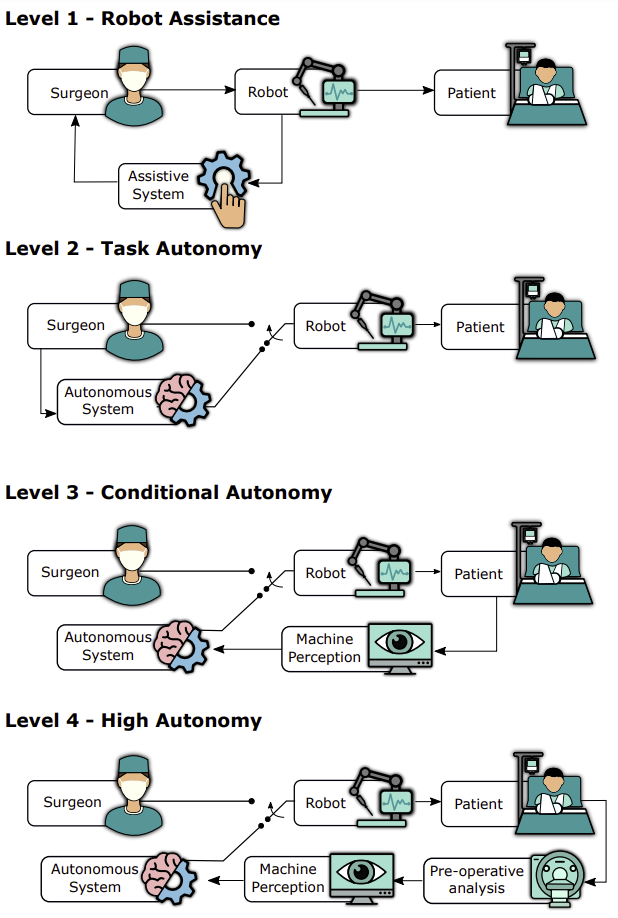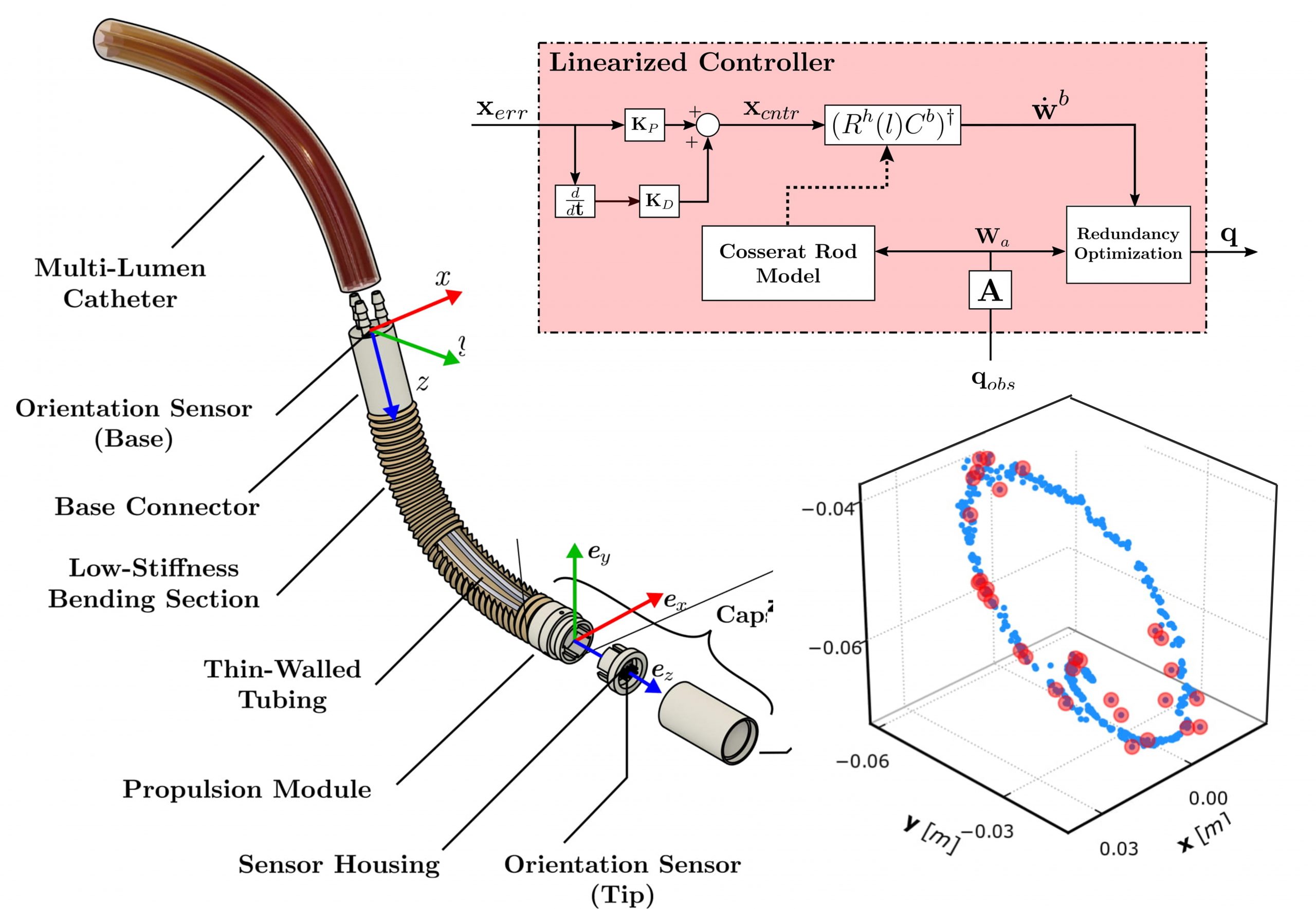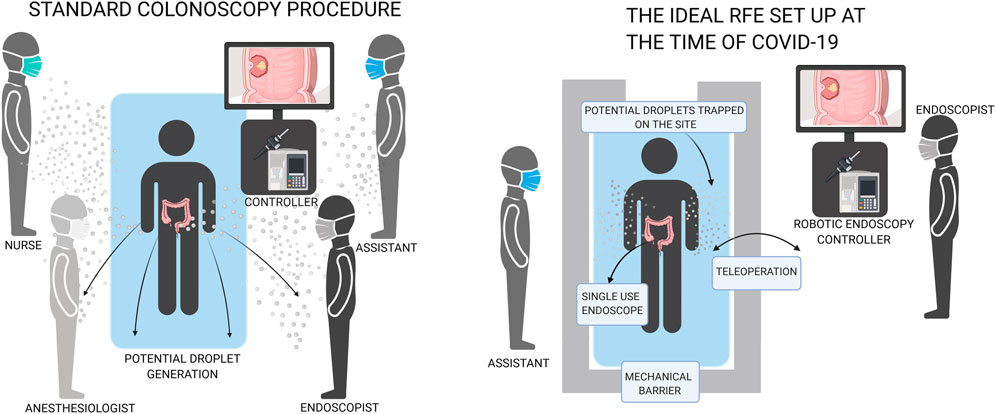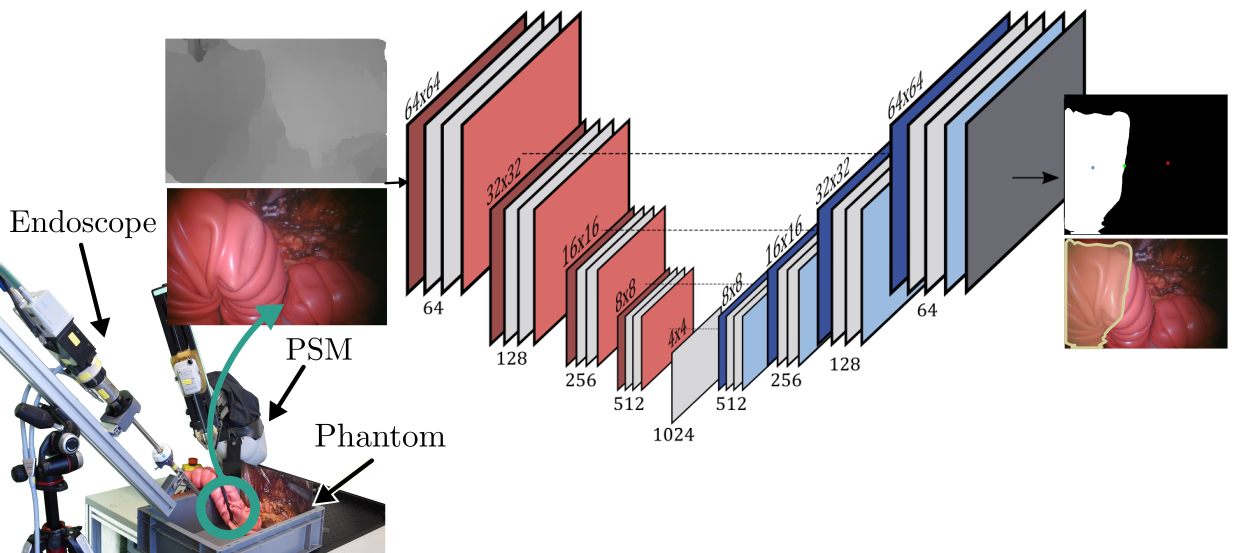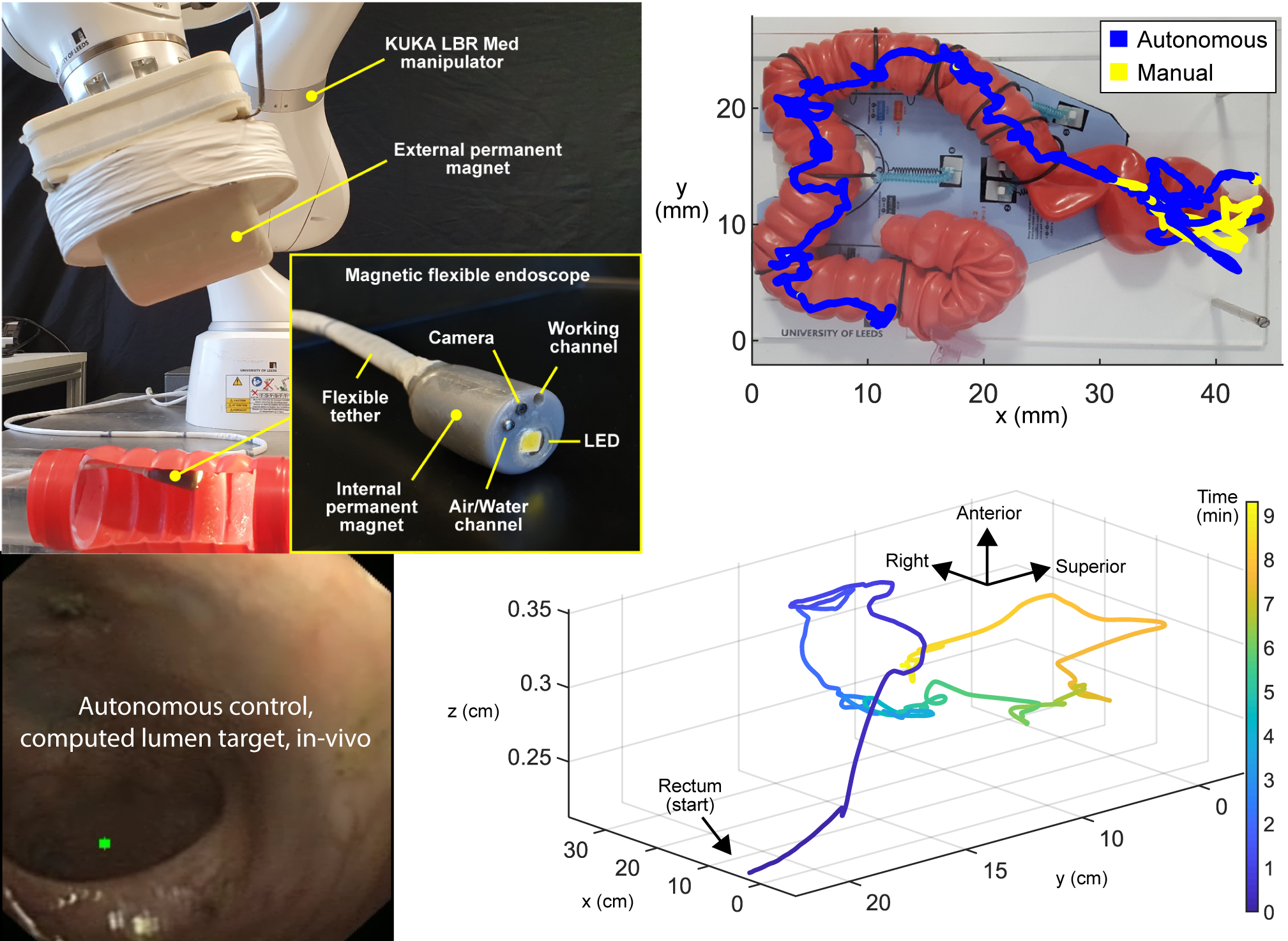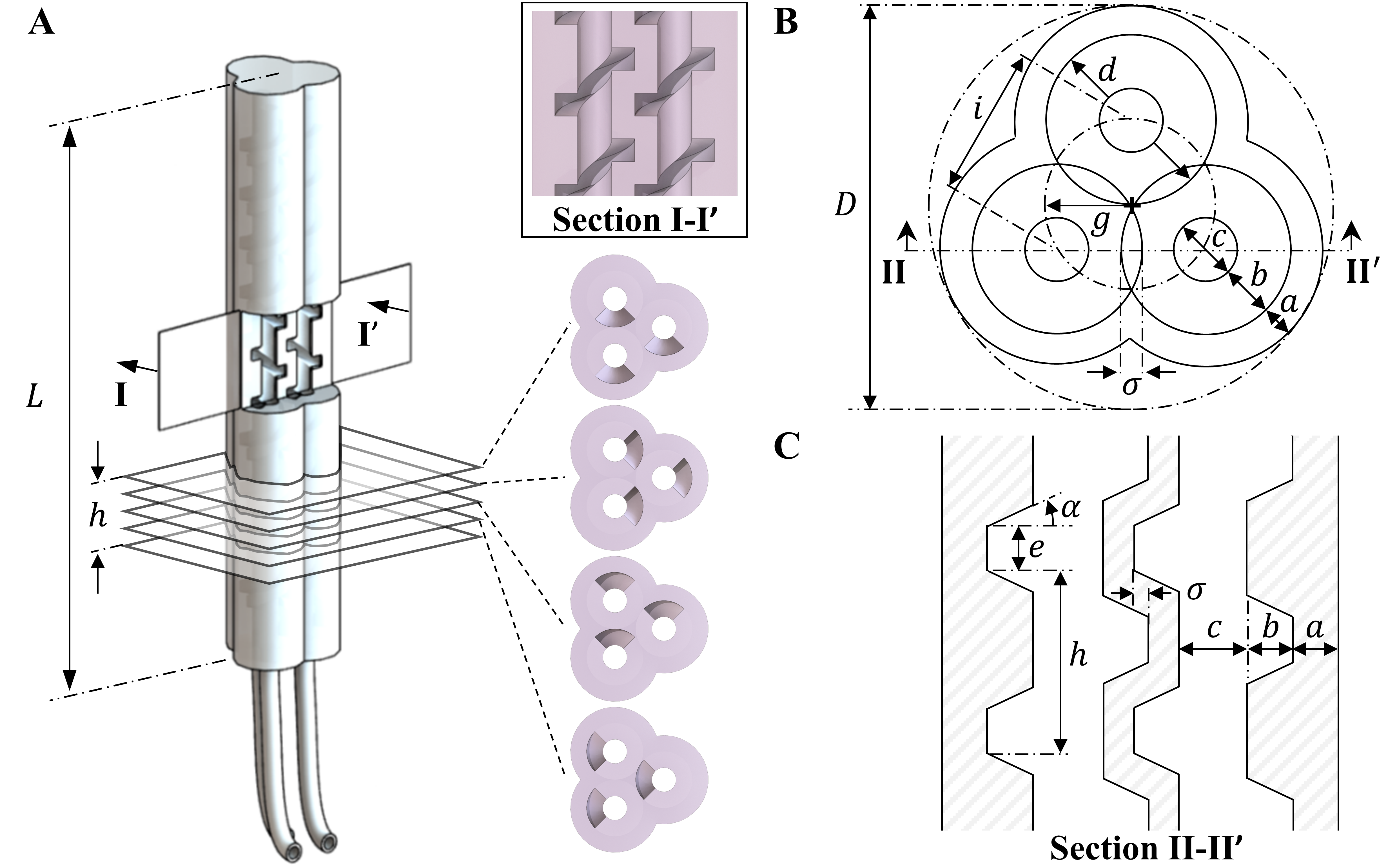STORMLAB featured in the version of the June 8th issue of New Electronics magazine, showing a robotic surgery front cover and accompanying article by Neil Tyler in which Dr Pietro Valdastri was quoted. See the issue here: https://www.newelectronics.co.uk/newelectronics-digital-magazine/14816
T-rays could ‘revolutionise cancer treatment’
Thackray Medical Museum Exhibits simplified Robotic Colonoscopy Platform
Thanks to the effort of Andrew Jackson from Mech Eng at Uni Leeds, a simplified version of our robotic colonoscopy platform is now on display at the Thackray Medical Museum. The exhibit allows visitors to control a robot arm to steer a magnetic capsule in order to detect polyps inside a simulated colon. The Thackray […]
Autonomy in SurgicalRobotics
Starting from the autonomotive field, the topic of autonomy in robotics has been largely debated by the research community. In particular, the last 20 years have seen the rise of autonomous surgical robots as a result of an increasing interest by the community and the availability of robotic research platform. In this paper, starting from […]
Closed-loop Control Approach for Soft Continuum Manipulators under Tip Follower Actuation in IJRR
Soft continuum manipulators, inspired by nature, facilitate motion within complex environments where traditional rigid robots may be ineffective. This has driven demand for new control schemes designed to precisely control these highly flexible manipulators, whose kinematics may be sensitive to external loads, such as gravity. In this paper, published in the International Journal of Robotics […]
Guidelines for Robotic Flexible Endoscopy at the Time of COVID-19
In this paper, we review the state of flexible gastrointestinal endoscopy during COVID-19 and the significant changes that it has undergone over the last few months. One of the most challenging aspects has been related to potential generation of aerosols during endoscopy procedures and how this presents an increased risk to healthcare workers. This resulted […]
A Comparative Study of Spatio-Temporal U-Nets for Tissue Segmentation in Surgical Robotics
This paper compares the performance of three different neural network structures based on the U-Net for tissue segmentation. The models subject of this study comprise temporal layers such as Long Short Term Memory cells and Attention Gate block. Results show that the model benefits from the implementation of temporal layers along with attention-based layers, even […]
On the Observability and Observer Design on the Special Orthogonal Group Based on Partial Inertial Sensing
We recently demonstrated the feasibility in estimating the rotation of a rigid body (attitude), by the only mean of accelerometer and gyroscope. Find our paper on IEEE Transactions on Automatic Control: https://ieeexplore.ieee.org/document/9308988 These results are fundamental for localization in presence of strong magnetic fields, which provoke saturation or artefacts in magnetometers. Saturations in the magnetometer […]
Enabling the future of colonoscopy with intelligent and autonomous magnetic manipulation
The magnetic flexible endoscope team have just published their latest work entitled ‘Enabling the future of colonoscopy with intelligent and autonomous magnetic manipulation’ – the culmination of 12 years of research by an international team of scientists led by the University of Leeds. The research has been published in the scientific journal Nature Machine Intelligence […]
Parallel Helix Actuators for Soft Robotic Applications
Multi-chamber soft pneumatic actuators are useful for many applications, including medical and surgical robotic devices. However, existing methods used for their manufacture often require multiple manual steps, leading to reduced precision and an increase in size and complexity. In this new work, we present Parallel Helix Actuators (PHAs) which use helical interlocking cores to significantly […]


